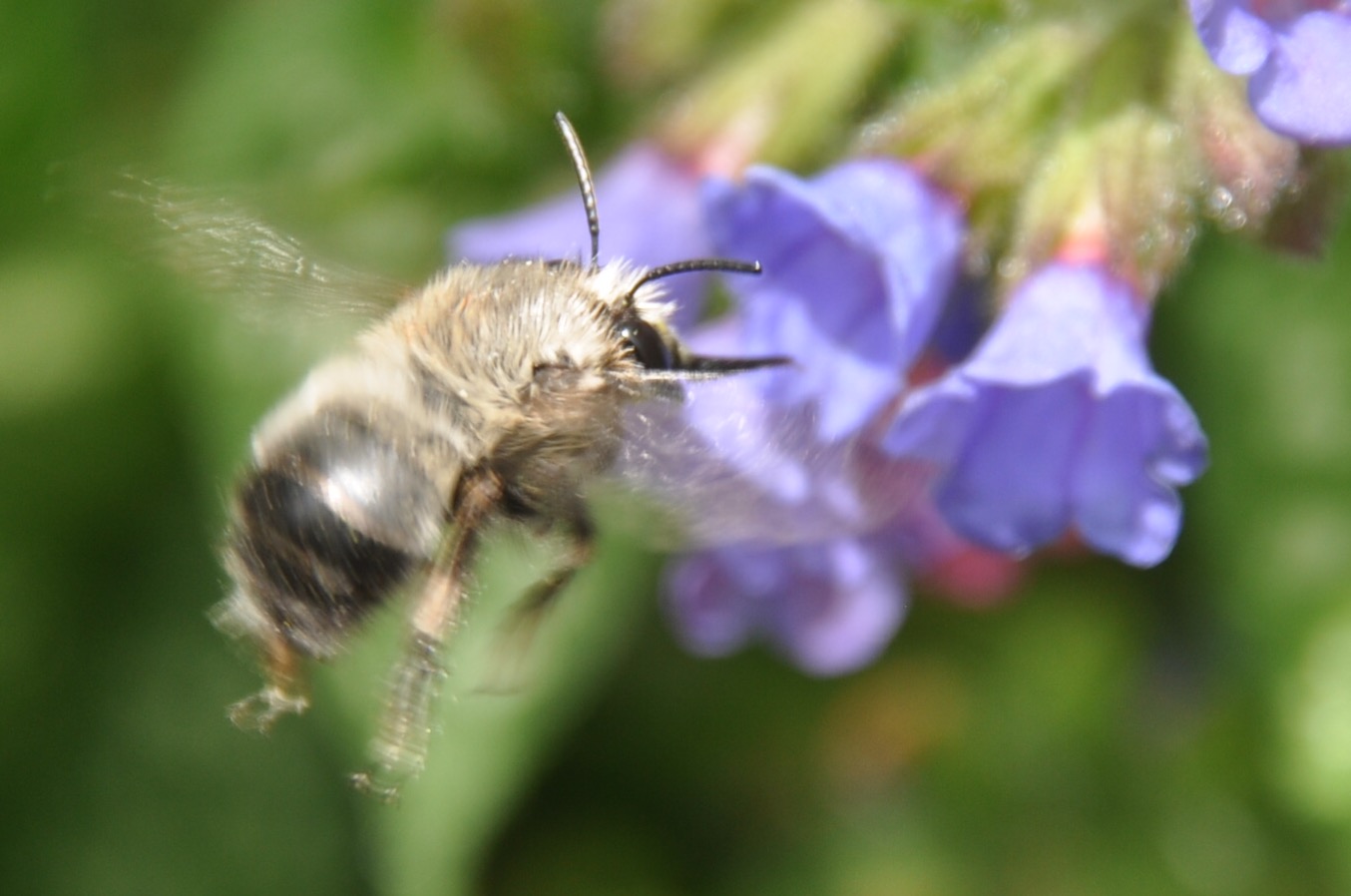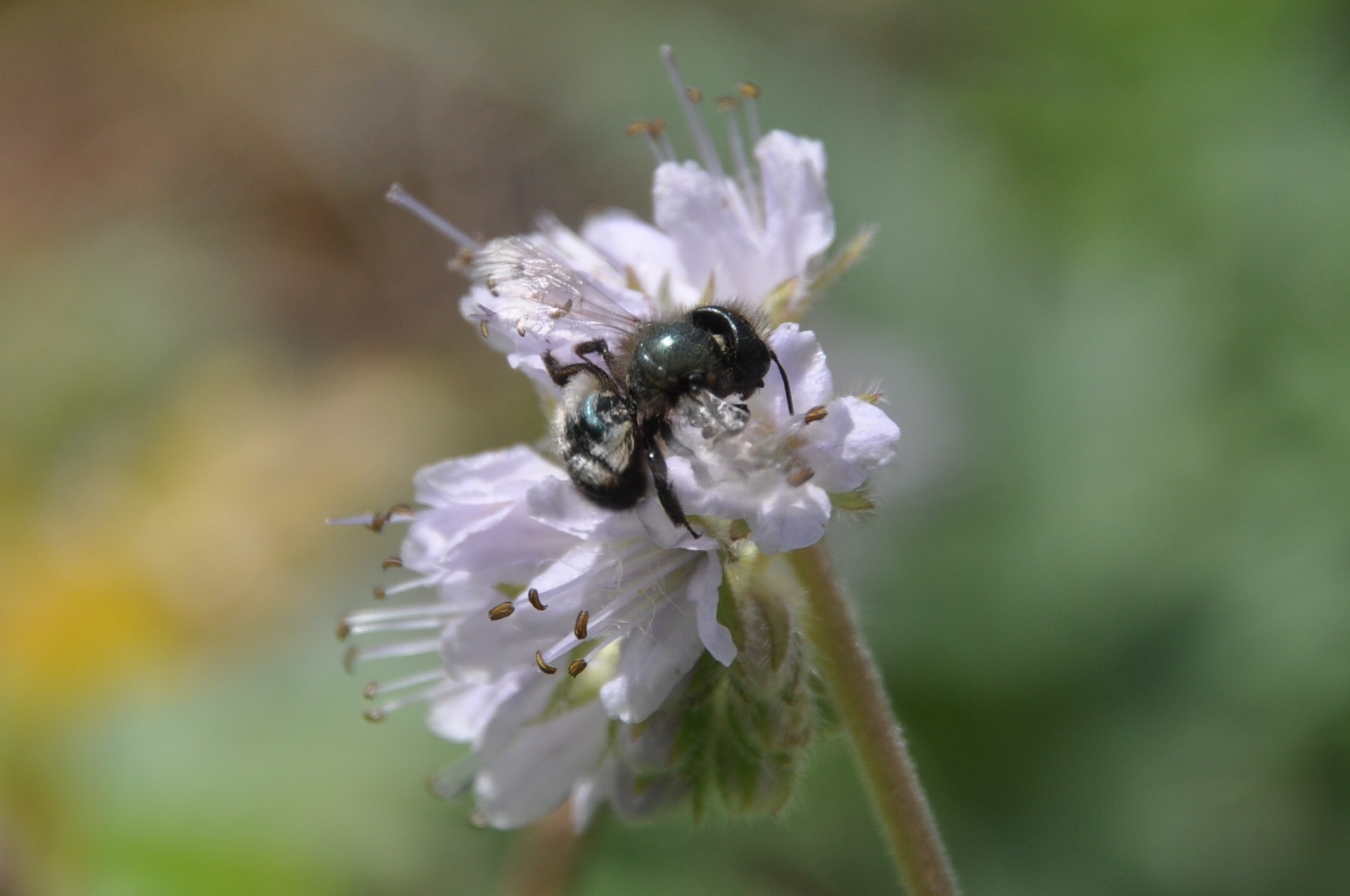Big, black, metallic bees. You can't miss them!
Lots of people don't like carpenter bees. As their name suggests, they carve nest holes in wood. That means your house, fence, outdoor furniture, and arbor are fair game... but they commonly re-use the holes, too. So they don't always do damage. Consider the benefits of providing habitat for these beautiful pollinators.
Bee-world romance:
Photo from whatsthatbug.com.
As you can see the males look pretty different. They are not shy, either. You will see male carpenter bees zipping around your yard, hovering, perhaps try to intimidate you, then zipping away. They are defending their territories.
It's hard to get a photo of them in flight together (mating). But here's my attempt:
Yeah.
Anyway, next time you hear a low BUZZZZZZ overhead that sounds like a couple of angry bees-in-a-bag... Look up!!









